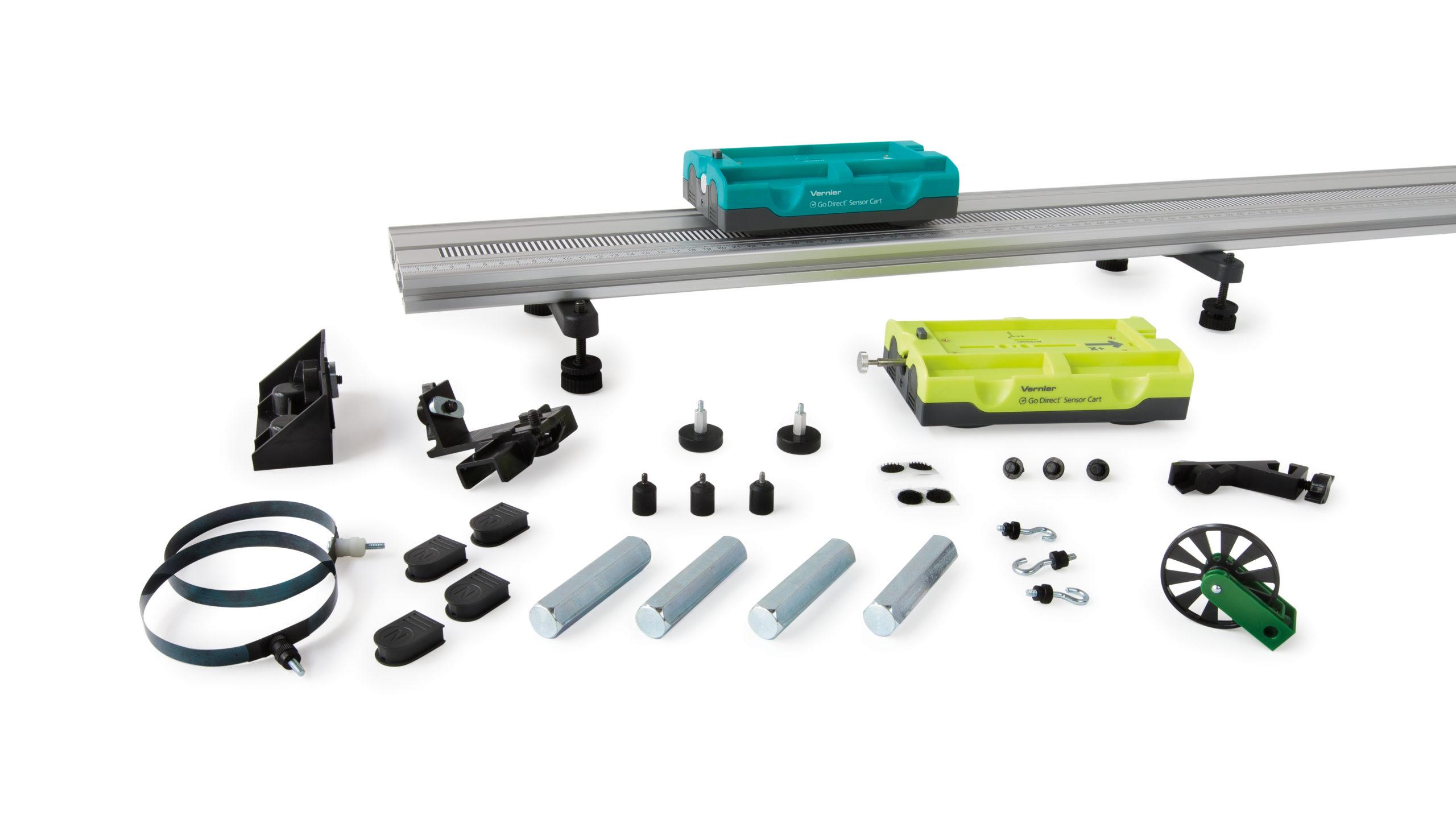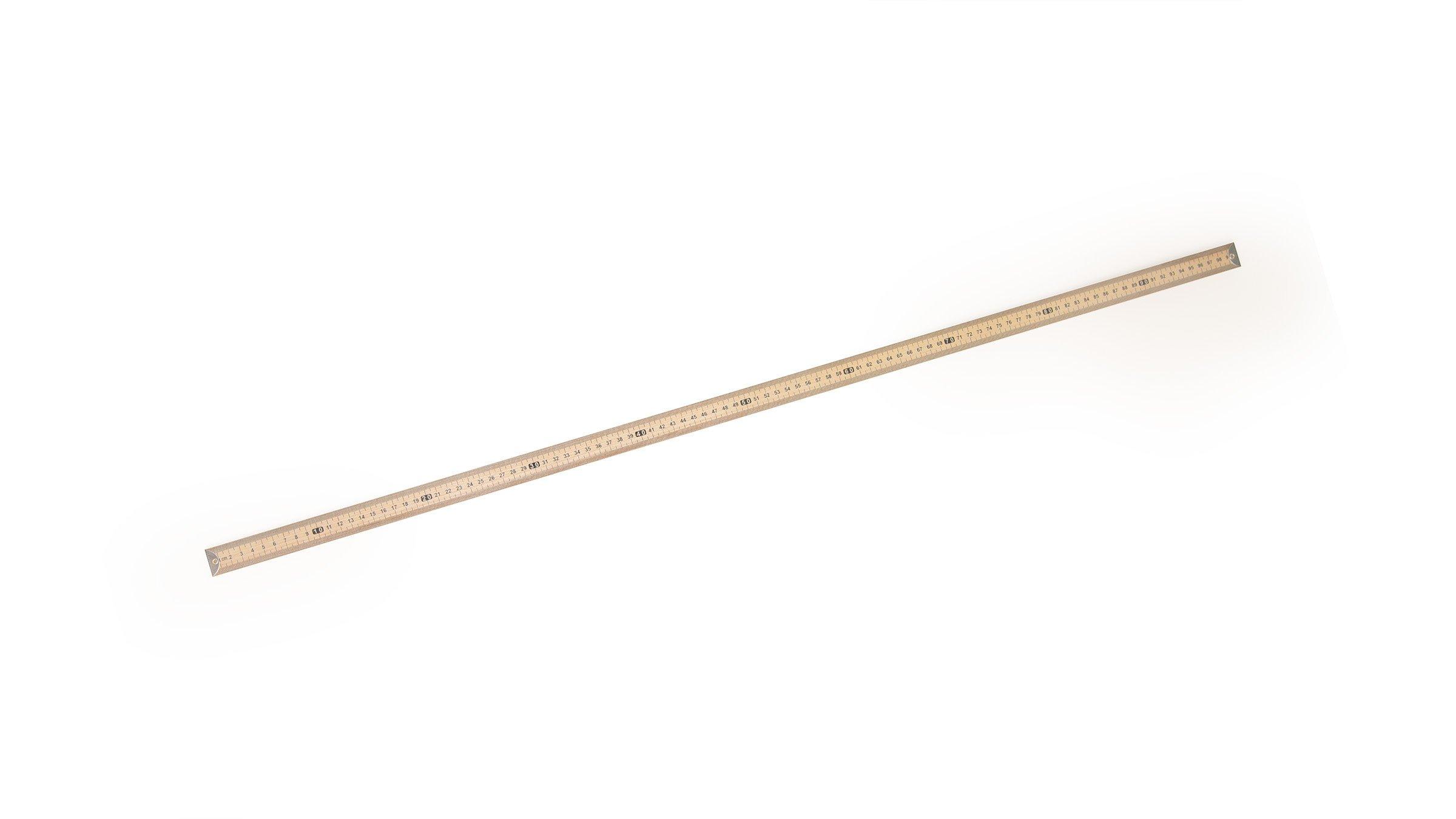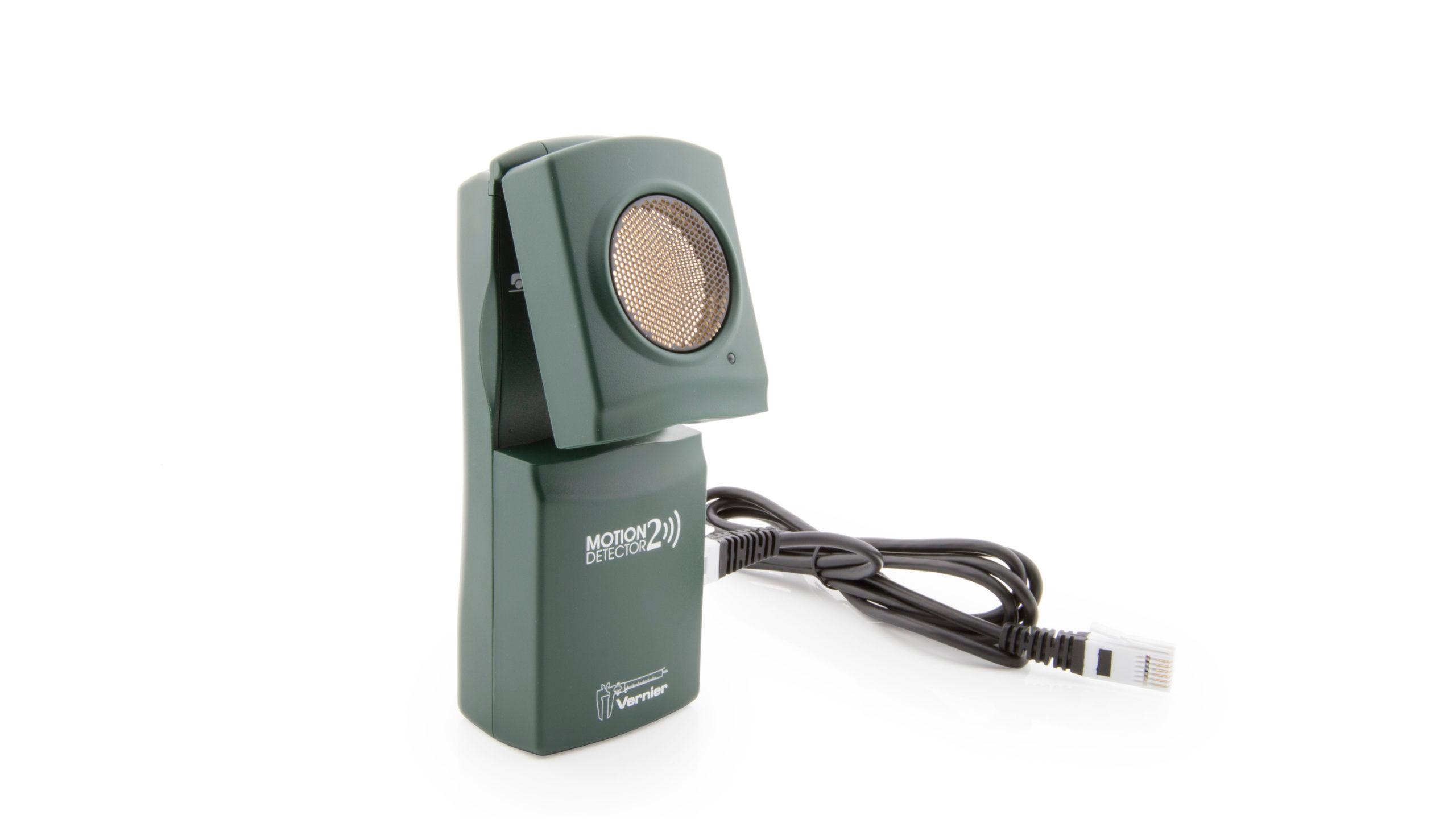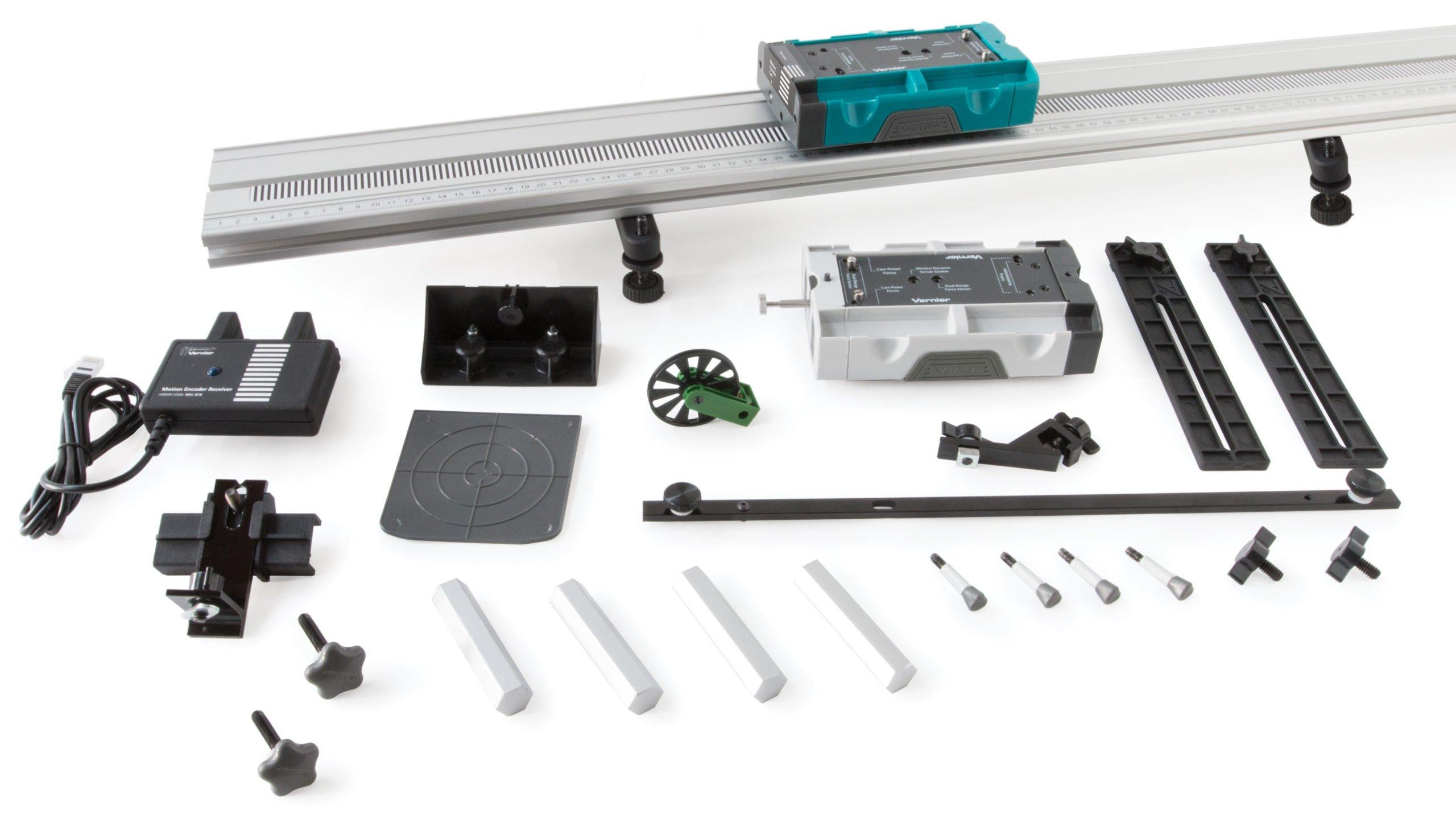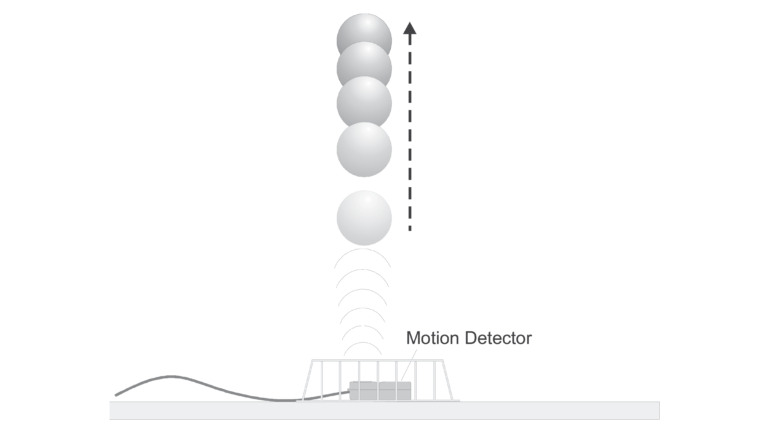
Introduction
Lots of objects go back and forth; that is, they move along a path first in one direction, then move back the other way. An oscillating pendulum or a ball tossed vertically into the air are examples of things that go back and forth. Graphs of the position vs. time and velocity vs. time for such objects share several features. When an object changes speed or direction, it accelerates. By examining the graphs, you will be able to tell if an object is accelerating. In this experiment, you will observe several objects that change speed and direction as they go back and forth:
- Oscillating pendulum
- Dynamics cart rolling up and down an incline
- Student jumping into the air
- Mass oscillating at the end of a spring
- Ball tossed into the air
Analyzing and comparing graphs of the motion of these objects will help you to apply ideas of kinematics more clearly.
Objectives
- Qualitatively analyze the motion of objects that move back and forth.
- Analyze and interpret back and forth motion in kinematics graphs.
- Use kinematic graphs to catalog objects that exhibit similar motion.
Sensors and Equipment
This experiment features the following sensors and equipment. Additional equipment may be required.
Correlations
Teaching to an educational standard? This experiment supports the standards below.
- International Baccalaureate (IB) 2025/Physics
- The students should understand that the motion of bodies through space and time can be described and analysed in terms of position, velocity, and acceleration
- The students should understand that the motion of bodies through space and time can be described and analysed in terms of position, velocity, and acceleration
- The students should understand velocity is the rate of change of position, and acceleration is the rate of change of velocity
- The students should understand the change in position is the displacement
- The students should understand the change in position is the displacement
- The students should understand the difference between instantaneous and average values of velocity, speed and acceleration, and how to determine them
- The students should understand the equations of motion for solving problems with uniformly accelerated motion as given by, s=(u+t/2)t, v=u+at, s=ut+(1/2)at^2, v^2=u^2+2as
- The students should understand motion with uniform and non-uniform acceleration
Ready to Experiment?
Ask an Expert
Get answers to your questions about how to teach this experiment with our support team.
- Call toll-free: 888-837-6437
- Chat with Us
- Email support@vernier.com
Purchase the Lab Book
This experiment is #2 of Physics with Vernier. The experiment in the book includes student instructions as well as instructor information for set up, helpful hints, and sample graphs and data.


